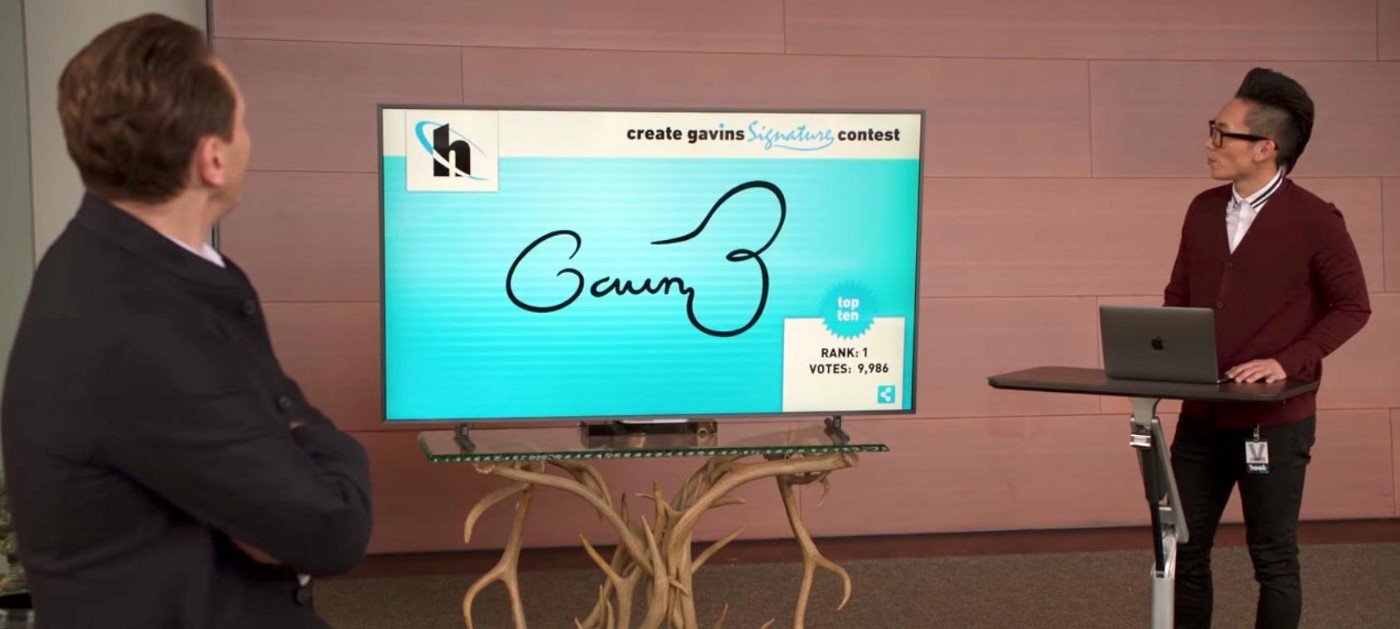Improving Your Team’s Presentation Skills Will Make You Rich
Delightful people enjoying a delightful, and career-enhancing workshop.
Let me tell you a story. If it sounds familiar it’s probably because it is. If it sounds painful it’s because it is. If it sounds expensive, well… you get my point.
You’re sitting in a design presentation. Along with nine other people. There’s a cost to having each of those people there. In this particular story the design is being presented by your very capable internal team, so there’s a salary cost. Not just of the time they’re spending in this meeting, but of the time they spent doing the work — and the work they aren’t doing while they are sitting in the room. There’s a designer in the front of the room. They’re presenting a revamped onramping flow for your new service. You need to know if it’ll work. They’re not telling you if it’ll work. They’re talking about typography, design systems, and color palettes. You look over at Jim from Marketing. Jim looks as confused as you do.
Let me pause the action in the room for a bit for a little backstory.
The people you hired to do this work are actually very good at what they do, that’s why you hired them and agreed to pay them generous salaries. And they’ve done their homework. They’ve been researching onboarding flows for months. They’ve stolen some very good ideas and improved on them. They’ve also tested this thing with your customers, both current and desired, and it tested well. So what they’re showing you is actually very good work. It’s gonna work.
Let’s go back to the meeting.
The designer is now talking about how responsive the design is, which is important, but still isn’t answering the question. You can see what it looks like, why do they keep describing it? You need to know if it works!
This meeting repeats itself in workplaces around the world. Trust me, it’s only funny when it’s on TV.
This meeting repeats itself in workplaces around the world. Trust me, it’s only funny when it’s on TV.
You’ve been trying to get funding for this project for almost a year. You’ve got one shot to do it right. You look over at the CEO, oh my god she’s in this meeting too! And she’s looking over at you like she’s not getting the answers she needs either. You just felt a drop of sweat down the nape of your neck.
Finally, the designer concludes the presentation with “do you like it?” practically curtsying. Everyone sits there nervously. You’re looking at a project schedule. You’re counting the weeks until launch. The CEO gets up and leaves. And you end up punting on the whole thing by just telling the design team to flesh it out a little bit more, which neither of you really understands. And the product manager attempts to schedule another very expensive meeting for same time next week.
The work was good. They couldn’t sell it.
In workplaces across the world, garbage cans, both digital and physical, are filled with good work. Work that solves problems for users. Work that financially benefits companies. Work that improves people’s lives. Work that would’ve saved the company.
Just as importantly, those garbage cans are filled with money. Because that work took time to do. It may have used up design cycles, engineering cycles, and product cycles. That work was expensive. And it’s just sitting there, crumpled into a ball of regret and lost time, because the person who made it couldn’t convince you it was good.
More importantly, that good solution isn’t going to be implemented. And it will most likely be replaced with a solution that’s not as strong because it was made by someone who didn’t quite understand why they had to come up with a second solution when the first one worked.
Good solutions aren’t always obvious. In fact, they’re seldom obvious. And they certainly shouldn’t be left to sell themselves. Whoever made that solution needs the skills to stand up in front of it, explain why it’s a good solution, explain how it meets project goals, explain what led to that solution, and what kind of impact that solution will have in the near and long term. And when that doesn’t happen the good solution goes in the trash, along with the cycles used to design it. New cycles are allocated. All of this is, of course, very expensive.
During the past three years, I’ve been teaching a workshop on how to present your work with confidence. I’ve done it all over the world. And I’ve heard the scenario above a thousand times. There’s a tremendous of good work out there going right into the garbage. To be fair there’s a tremendous amount of bad work out there too. And that work should be in the garbage. But what concerns me, and should concern you, is the amount of money your company is wasting because the people doing your work don’t know how to present it to you with confidence.
It’s not their fault, by the way. It’s fairly easy to get through design school without learning how to present design. Critiques don’t count. That’s designers talking about design with other designers. Which is useful. To designers. But it also sets the stage for designers showing up at a job and believing they can present work to their CEO by starting with a history of typography. You’ve probably sat through that presentation. My workshop teaches people how to tailor what they’re saying to the audience in the room. For example, if I’m presenting to the CFO, that’s an excellent opportunity to get a certain type of feedback that no one else might be able to give me, and it’s on me to figure out how to get it. Presenting is a learned skill.
The end result of all this is that you may have hired people who can do very good work, but have no training in convincing you of that. And that’s expensive. That means work ships late and quality suffers because people are running back and forth redoing old work as well as taking on whatever new work may be coming down the pike, unable to focus on either.
I wanna save you money. I also wanna make some money, obviously, but the amount of money I make selling you a workshop is always going to be less than the amount of money you’re going to make because of it.





